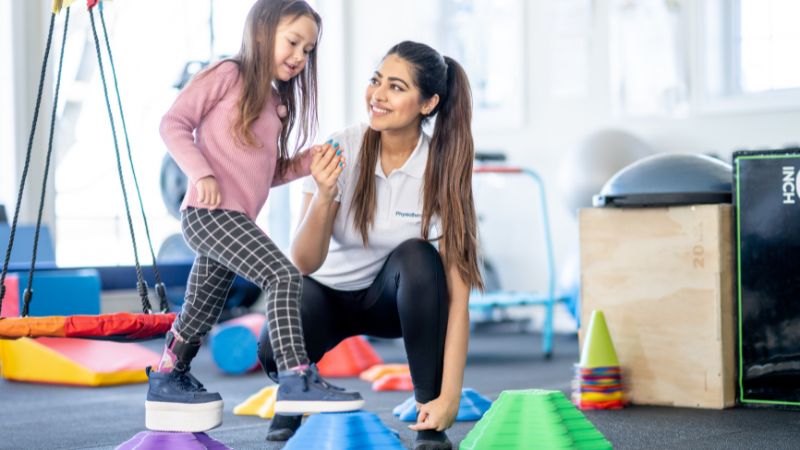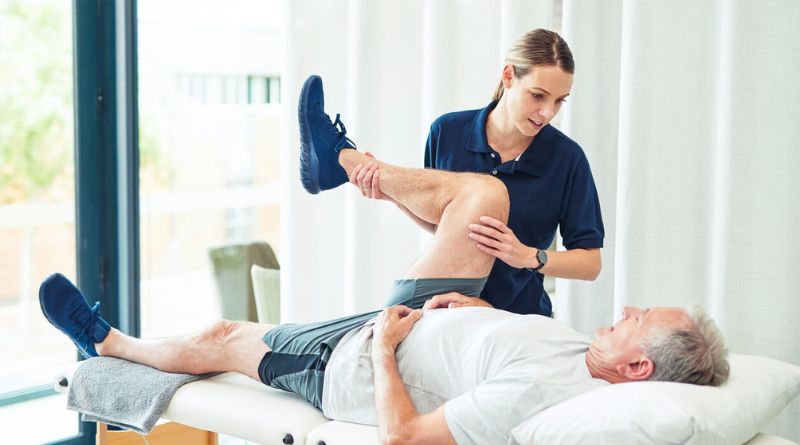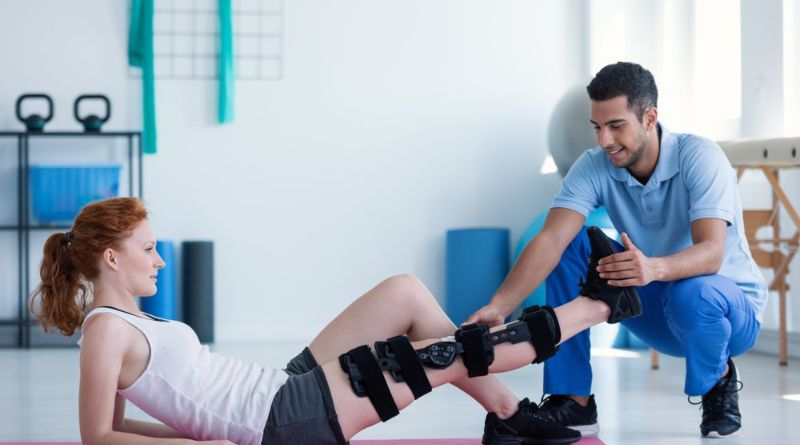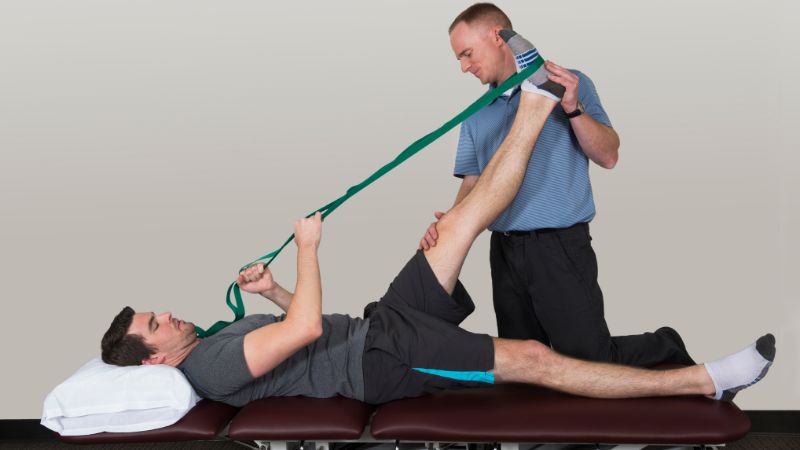In terms of fostering children’s physical capabilities, motor skills, and general wellbeing, pediatric physical therapy is at the forefront. Tailored to address conditions ranging from developmental delays to injuries, these therapies encompass a diverse range of exercises and activities designed to promote growth and rehabilitation. The “Best Pediatric Physical Therapy Exercises & Activities” are carefully crafted to improve strength, coordination, balance, and flexibility essential for a child’s daily activities and long-term development. Each exercise is thoughtfully selected to meet the specific needs of the child, ensuring sessions are both effective and engaging. By integrating these practices into therapy sessions, pediatric physical therapists empower children to achieve milestones, enhance their independence, and thrive in their physical pursuits.
Best Pediatric Physical Therapy Exercises & Activities
Balance Activities

Balance activities are integral to pediatric physical therapy as they focus on enhancing core strength, stability, and postural control. These exercises, such as standing on one leg, walking on balance beams, or navigating obstacle courses, help children improve their ability to maintain equilibrium and coordinate movements effectively. By challenging balance in various contexts, therapists aim to develop foundational skills necessary for everyday activities like walking, running, and playing sports. Through consistent practice and progression, children not only strengthen their muscles but also enhance their proprioception and spatial awareness. Balance activities are tailored to the child’s age and physical abilities, ensuring safety and maximizing therapeutic benefits. Overall, these exercises play a crucial role in promoting motor development and improving functional mobility in children undergoing physical therapy.
Gross Motor Skill Exercises
Gross motor skills involve the coordination and control of large muscle groups essential for activities such as crawling, jumping, and climbing. Pediatric physical therapists incorporate exercises like obstacle courses, jumping jacks, and climbing structures to enhance these skills. By engaging in these activities, children improve their muscle strength, endurance, and coordination, which are fundamental for achieving developmental milestones and participating in recreational activities. Therapists carefully structure these exercises to challenge children at their individual levels while fostering a sense of accomplishment and confidence. Gross motor skill exercises not only promote physical fitness but also support cognitive and social-emotional development through interactive and goal-oriented play.
Strength Training
Strength training in pediatric physical therapy focuses on improving muscle strength, endurance, and overall functional mobility. Therapists utilize a variety of techniques including resistance bands, body-weight exercises, and modified weightlifting to target specific muscle groups and movement patterns. These exercises are tailored to the child’s developmental stage and therapeutic goals, ensuring safety and effectiveness. By progressively challenging muscles through controlled resistance, children can improve their ability to perform daily tasks independently and participate in recreational activities with greater ease. Strength training also promotes bone health and joint stability, which are crucial for long-term physical well-being. Through structured and supervised sessions, pediatric physical therapists empower children to build confidence in their physical abilities and achieve optimal outcomes in their rehabilitation journey.
Coordination Drills
Coordination drills focus on improving the synchronization of movements and motor planning skills in children. These exercises are essential for tasks such as catching a ball, riding a bike, or tying shoelaces, which require precise coordination of hands, eyes, and body. Pediatric physical therapists incorporate activities like throwing and catching games, using bean bags or balloons, to enhance hand-eye coordination and bilateral motor skills. By providing opportunities for repetitive practice and skill refinement, therapists help children improve their ability to perform complex movements accurately and efficiently. Coordination drills are adapted to each child’s developmental level and progress, ensuring gradual skill acquisition and confidence building. Overall, these exercises promote functional independence and participation in daily activities, fostering overall physical and cognitive development in children undergoing physical therapy.
Flexibility and Stretching
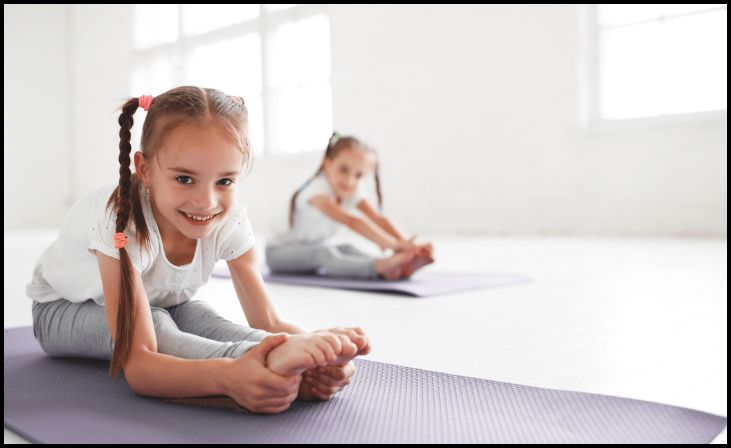
Flexibility and stretching exercises are essential components of pediatric physical therapy aimed at improving range of motion, muscle elasticity, and joint flexibility. These exercises help children maintain or increase their ability to move freely and comfortably, which is crucial for activities such as reaching, bending, and stretching. Therapists incorporate techniques like static stretching, dynamic stretching, and yoga-inspired poses to target specific muscle groups and improve overall flexibility. By incorporating these exercises into therapy sessions, therapists aim to alleviate muscle tightness, enhance posture, and reduce the risk of injury during physical activities. Flexibility and stretching exercises are tailored to each child’s individual needs and therapeutic goals, ensuring safe and effective outcomes. Through regular practice and guidance, children can achieve improved physical function and performance in daily tasks, promoting independence and quality of life.
Aquatic Therapy
Aquatic therapy utilizes the properties of water, such as buoyancy and resistance, to facilitate therapeutic exercises and activities in a safe and supportive environment. These sessions typically take place in a pool under the guidance of trained therapists and may include activities like swimming, water walking, and resistance exercises using water jets or flotation devices. Aquatic therapy benefits children by reducing stress on joints, promoting muscle relaxation, and enhancing cardiovascular fitness and endurance. The buoyancy of water supports body weight, allowing children with physical challenges to move more freely and comfortably than on land. Additionally, resistance from water provides a gentle yet effective means to strengthen muscles and improve coordination. Aquatic therapy is particularly beneficial for children with conditions such as cerebral palsy, spina bifida, or musculoskeletal injuries, offering therapeutic benefits while engaging children in enjoyable and stimulating activities.
Sensory Integration Activities
Sensory integration activities are designed to help children process and respond to sensory information effectively, which is crucial for overall development and participation in daily activities. These activities aim to improve sensory processing, attention, and behavioral regulation through structured and stimulating experiences. Examples of sensory integration activities include swinging, bouncing on therapy balls, or exploring textured materials. By providing controlled sensory input, therapists help children develop adaptive responses and enhance their ability to engage in meaningful interactions and tasks. Sensory integration activities are tailored to each child’s sensory preferences and sensitivities, ensuring a positive and supportive therapeutic experience. Through consistent participation in sensory integration activities, children can achieve improved sensory processing skills, emotional regulation, and overall participation in daily routines and social interactions.
Interactive Play
Interactive play is a fundamental component of pediatric physical therapy that engages children in therapeutic activities while promoting movement, social interaction, and emotional well-being. These activities are designed to address specific therapeutic goals in a playful and motivating manner. Examples include games like Simon Says, parachute games, or modified sports activities that encourage physical movement and coordination. Through interactive play, therapists foster a positive therapeutic environment where children can develop motor skills, cognitive abilities, and social skills simultaneously. By incorporating therapeutic objectives into enjoyable and meaningful activities, interactive play enhances children’s motivation, engagement, and overall participation in therapy sessions. Additionally, interactive play promotes a sense of achievement and self-confidence as children achieve milestones and progress in their physical abilities and functional skills.
Assistive Device Training
Assistive device training is an essential component of pediatric physical therapy that focuses on teaching children how to safely and effectively use mobility aids such as walkers, crutches, or wheelchairs. These training sessions are tailored to each child’s specific needs and functional abilities, providing hands-on practice and guidance in using assistive devices in various environments and situations. Therapists emphasize proper body mechanics, balance, and coordination techniques to optimize independence and safety during mobility tasks. By mastering the use of assistive devices, children can enhance their mobility, participate more fully in daily activities, and improve overall quality of life. Assistive device training also includes strategies to promote energy conservation and prevent secondary complications, empowering children to navigate their surroundings confidently and achieve greater independence in their daily routines.
Functional Training
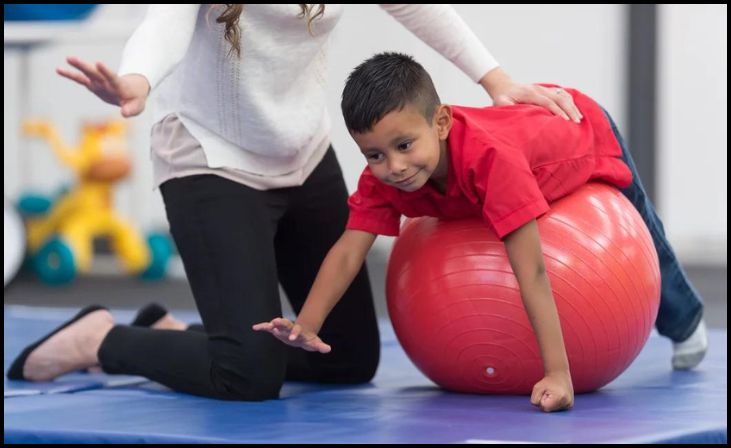
Functional training focuses on improving a child’s ability to perform everyday tasks and activities independently and efficiently. These exercises are designed to enhance functional mobility, strength, endurance, and coordination necessary for tasks such as dressing, grooming, or household chores. Therapists utilize adaptive equipment, modified techniques, and task-specific training to address individual goals and promote skill acquisition. Functional training sessions are tailored to each child’s developmental stage, interests, and daily routines, ensuring relevance and applicability to real-life scenarios. By integrating functional training into therapy sessions, therapists empower children to achieve greater independence, confidence, and success in performing essential daily activities. Functional training plays a critical role in enhancing overall quality of life and promoting long-term functional outcomes for children undergoing pediatric physical therapy.
For More Related Posts Keep Visiting: 9 Benefits of Physical Therapy for Post-Surgery Rehabilitation
Conclusion
Pediatric physical therapy is not just about rehabilitation; it’s about empowering children to thrive physically, emotionally, and socially. Through carefully curated exercises and activities like balance drills, strength training, and interactive play, therapists foster development across multiple domains. These interventions not only enhance motor skills and physical function but also boost confidence and independence in daily activities. Whether it’s improving balance through obstacle courses or promoting sensory integration with therapeutic swings, each therapy session is tailored to meet the unique needs of the child, ensuring progress in a supportive environment.
FAQs
How often should pediatric physical therapy sessions occur?
Pediatric physical therapy sessions frequency depends on the child’s condition and therapy goals, typically ranging from once a week to several times a week.
What age groups benefit from pediatric physical therapy?
Pediatric physical therapy benefits infants, toddlers, children, and adolescents up to 18 years old, addressing a wide range of developmental and physical challenges.
How can parents support their child’s progress outside of therapy sessions?
Parents can support their child’s progress by encouraging home exercises, providing adaptive equipment, and promoting an active lifestyle that complements therapy goals.

